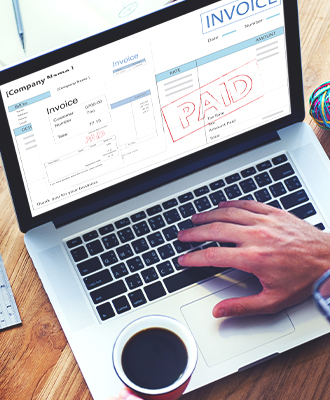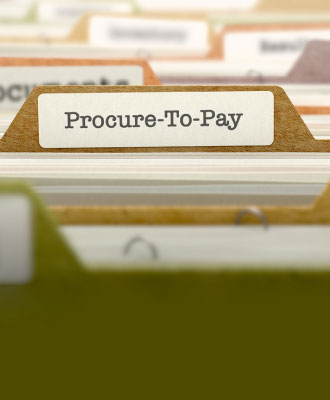Keeping tabs on your outstanding liabilities is an important, and frequent, part of running a successful business. Accurate and complete accounts payable balance sheet entries can ensure you know who you owe, how much you owe them, and the number of days until they need to be paid.
A firm working knowledge of how accounts payable should be entered on your balance sheet can help in other ways, too, including improving your cash flow, maintaining positive vendor relationships, and ensuring the accuracy of your financial statements. Take some time to review the ins and outs of accounts payable and help protect the reputation, competitive agility and growth of your business.
Why Accounts Payable Matter
Your company needs goods and services to operate. The short-term liabilities you incur purchasing goods and services from suppliers, or obtaining funding from creditors, are known as accounts payable, sometimes shortened to AP or simply payables. Companies that rely on accrual accounting use a double-entry accounting system of debits and credits to record their incoming and outgoing financial activity, including accounts payable.
This is distinct from cash-only accounting, wherein the only records kept are cash inflows and cash outflows.
Accounts payable generally have their own associated payment terms and conditions, as negotiated with the vendor or creditor in question. These terms establish the amount owed, the methods of payment accepted, and the timeframe in which the debt must be paid. For example, an office supply store might offer 30 day terms for payment, whereas a raw materials supplier might offer a larger 90-day window for payment.
Accounts payable appear as current liabilities on your balance sheet. These short-term debts usually have terms of 90 days or less. Other types of current liabilities, such as notes payable and accrued expenses, are recorded in the same area. These debts are different from long-term liabilities, as payment is due in 12 months or less, rather than broken out over several years.
Depending on how they’re handled, accounts payable can be recorded as either a debit or a credit on your balance sheet.
Keeping accurate and complete records of every account payable is essential to maintaining accurate financial reports, calculating cash flow correctly to manage working capital, and protecting your relationships with vendors—not to mention avoiding late fees, penalties, or a reputation as a “slow-pay” or “no pay” customer!
Bookkeeping accuracy is especially important for small businesses who, lacking access to alternative funding and competing with larger companies for the best terms from vendors, may not be able to weather the reputational difficulties that come with late or missed payments.
Beyond maintaining healthy business interaction and your sterling reputation, having accurate AP entries means you’ll have the best available data when you’re auditing, applying for credit, or looking to attract investors who can help you grow your business. Your balance sheet also provides essential information for your income statement at year’s end, so the more accurate and complete it is, the fewer issues you’ll have with forecasting, audits, etc.
Note: Accounts payable are related to, but distinct from, accounts receivable (AR), which represent money owed to your company by customers. While payables are liabilities, each account receivable is recorded as an asset.
“Keeping accurate and complete records of every account payable is essential to maintaining accurate financial reports, calculating cash flow correctly, and protecting your relationships with vendors—not to mention avoiding late fees, penalties, or a reputation as a “slow-pay” or “no pay” customer!”
Balance Sheet Breakdown: The Basics
In order to record accounts payables accurately on your company’s balance sheet, it’s important to understand the balance sheet itself.
Generally speaking, a balance sheet breaks down into three areas:
- Your company’s assets
- Current and long-term liabilities
- Shareholders’ Equity
In turn, each of these areas is further broken out in finer detail.
Assets include:
- Accounts receivable (including funds owed directly to the company by customers)
- Inventory
- Marketable securities
- Goodwill and other intangible assets
- Cash (and cash equivalents)
Liabilities include:
- Wages
- Utilities and rent
- Debt (both long- and short-term debt)
- Dividends payable
Shareholders’ Equity is the amount available to shareholders should the company be completely liquidated (after all debts are paid). Shareholders’ equity is calculated by deducting a company’s total liabilities from its total assets.
Total Assets – Total Liabilities = Shareholders’ Equity
Sample Balance Sheet
To get a clearer picture of how accounts payable and other entries are recorded on a balance sheet, let’s take a look at a fictional example:
XYZ Company
Consolidated Balance Sheet
April 10, 2020
ASSETS
- Current assets:
- Cash and cash equivalents: $75,789
- Inventory: $40,000
- Short-term marketable securities: $32,485
- Total current assets: $98,274
- Property and equipment: $75,250
- Goodwill: $12,854
- Long-term marketable securities: $122,756
TOTAL ASSETS: $359,134
Note: Detailed records for each account payable should be made to the accounts payable subsidiary ledger.
LIABILITIES
- Current liabilities:
- Accounts Payable: $19,673
- Accrued expenses: $12,897
- Current portion of long-term debt: $7,491
- Total current liabilities: $40,061
- Long-term debt: $110,219
- Other non-current liabilities: $34,876
TOTAL LIABILITIES: $185,156
SHAREHOLDERS’ EQUITY: $173,978 (total assets – total liabilities)
Note: Shareholders’ equity may be further detailed in numerous ways, including total available stock, capital investments, retained earnings, etc.
Automating AP Makes Balancing the Books Easier
While you can certainly maintain a pen-and-paper balance sheet and manually calculate all your current and long-term manually, antiquated accounting systems have a hard time competing in today’s digitally-driven global market. Investing in an AP automation solution like PurchaseControl simplifies life for your procurement and AP teams by streamlining and automating your entire procure-to-pay (P2P) process, and helps you stay on top of accounts payable and receivable while adding value to all your other workflows, too.
Complete visibility into all transaction data, centralized data management and analysis for intuitive financial forecasting and generation of financial statements (including your cash flow statement), and elimination of human delay, error, and frustration are just some of the benefits that come with making the digital switch. It’s a move that makes sense for any company that wants all of its financial records to be accurate, audit-friendly, and available on-demand for smarter decision-making and strategic planning.
Accurate Accounts Payable Keeps Your Business Balanced
Staying on top of your current and long-term liabilities can help you maintain and grow your business without fear of nasty surprises in the form of missed payments, angry vendors, or lost investors. Tracking and recording your accounts payable—and automating your AP workflows—can help you make sure you always have correct and complete entries on your balance sheet so you can manage your cash flow, protect your credit rating and reputation, and build a strong, successful business known for paying the bills on time.
PurchaseControl Makes It Easy to Connect and Automate Your AP and Procurement Functions
Find Out How








